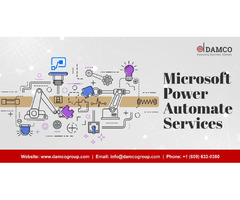Enterprise Asset Management (EAM) is a powerful tool that can help businesses streamline operations, reduce downtime, and cut maintenance costs. However, implementing an EAM solution is just the beginning. To truly gauge the success of your EAM initiative, you need to track the right Key Performance Indicators (KPIs). To this effect, lets take a closer look at some essential KPIs that will enable you to measure the effectiveness of your EAM system and ensure it's delivering the expected benefits.
- Asset Uptime
One of the primary objectives of EAM is to minimize asset downtime. This KPI is crucial because it directly impacts productivity and revenue. The higher the asset uptime, the better your EAM system is performing. Tracking asset downtime can help you identify recurring issues and plan maintenance activities more effectively.
- Maintenance Costs
Reducing maintenance costs is often a significant driver behind implementing an EAM solution. To assess the success of your EAM system, compare maintenance costs before and after its implementation. This should include labor, materials, and any associated overhead. A decrease in maintenance costs is a positive sign that your EAM system is helping optimize your maintenance processes.
- Mean Time Between Failures (MTBF) and Mean Time to Repair (MTTR)
MTBF measures the average time a piece of equipment operates before experiencing a failure. MTTR, on the other hand, measures how long it takes to repair that equipment and return it to operational status. These KPIs are essential for assessing the reliability and maintainability of your assets. A higher MTBF and a lower MTTR are indicators of a successful EAM system that is effectively preventing breakdowns and minimizing downtime.
- Preventive Maintenance Compliance
Preventive maintenance is a key strategy in EAM that involves performing maintenance tasks at scheduled intervals to prevent asset failures. Tracking preventive maintenance compliance tells you how well your team is adhering to maintenance schedules. Low compliance rates may indicate a need for better planning or resource allocation, while high compliance rates suggest a well-executed EAM program.
- Work Order Completion Rates
Work orders are a fundamental component of EAM systems. They help organize and prioritize maintenance tasks. Monitoring work order completion rates can reveal how efficiently your team is addressing maintenance requests and planned work. A high completion rate indicates that your EAM system is facilitating effective task management.
- Asset Health and Condition Monitoring
Modern EAM systems often incorporate condition monitoring and predictive maintenance capabilities. Tracking the health and condition of your assets through sensor data and predictive analytics can help you identify issues before they result in failures. The more assets you can monitor in real-time, the better you can anticipate and prevent problems.
- Inventory Management
Efficient inventory management is crucial in enterprise asset management to ensure that you have the right parts and materials available when needed for maintenance and repairs. Measure the accuracy of your inventory levels and the frequency of stockouts. A well-performing EAM system should lead to better inventory control and a reduction in emergency purchases.
- Overall Equipment Effectiveness (OEE)
OEE is a comprehensive KPI that considers asset availability, performance efficiency, and quality output. It provides a holistic view of how effectively your assets are being utilized. A high OEE score signifies that your EAM system is optimizing asset performance across multiple dimensions.
- Energy Consumption
Energy costs are a significant expense for many businesses. An effective EAM system can help optimize energy usage by ensuring that assets operate efficiently. Track energy consumption and look for trends and anomalies. A decrease in energy consumption can be a sign of improved asset performance through EAM.
- User Adoption and Satisfaction
Last but not least, don't overlook the importance of user adoption and satisfaction. A successful EAM system should be embraced by your maintenance teams and other relevant stakeholders. Conduct surveys or gather feedback to assess user satisfaction and identify areas for improvement in training or system usability.
Conclusion
By keeping a close eye on these metrics, you can fine-tune your EAM strategy and maximize the value of your assets while minimizing downtime and costs. Remember that EAM success is an ongoing journey, and continuous monitoring of KPIs is essential for long-term success.
TMA Systems provides your business with ability assess a wide range of key metrics through innovative and intuitive asset management software. By choosing our services, you're making a strategic decision to collaborate with a top-tier technology partner that provides globally recognized CMMS solutions for all manner of industries. With our assistance, your facility can achieve remarkable cost-efficiency improvements. But it's not just about cost savings. Your organization will also play a pivotal role in creating a seamless and more conducive environment working ecosystem for all stakeholders.
To find out more about how TMA Systems can help your companys EAM initiatives, please feel free to contact us here.


 Loading
Loading






